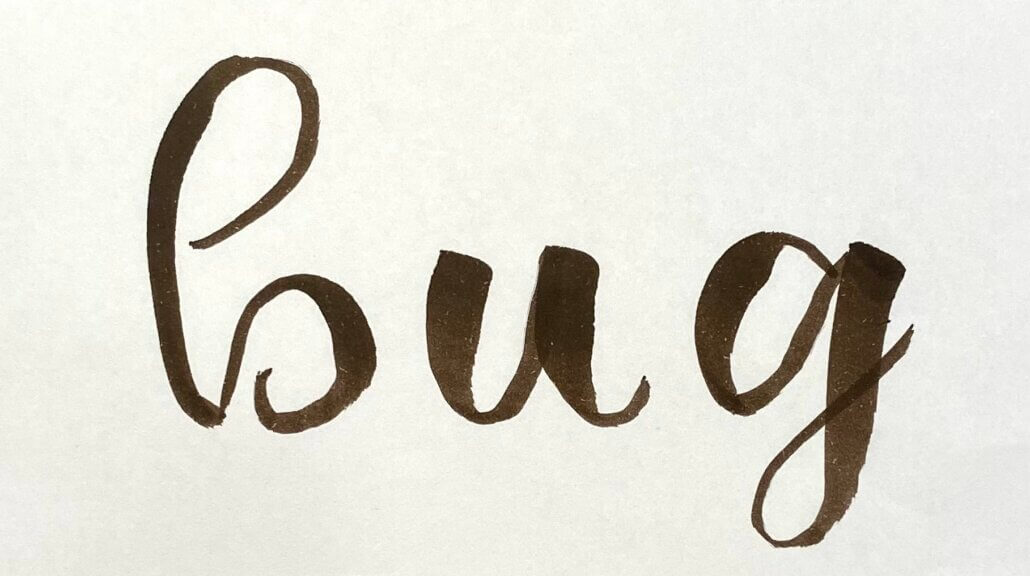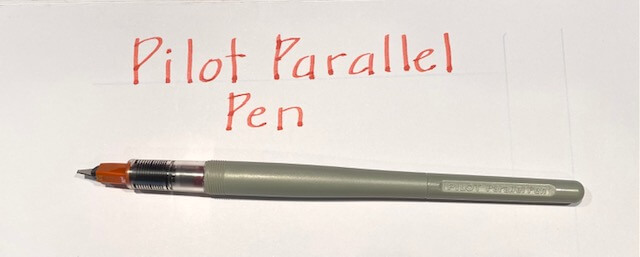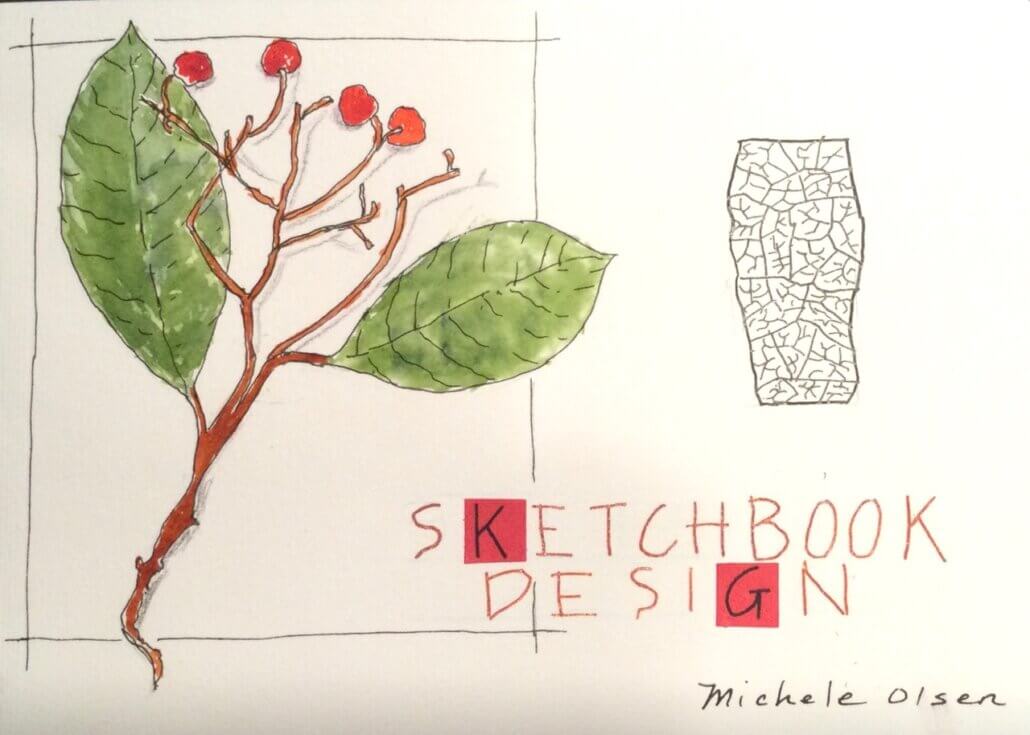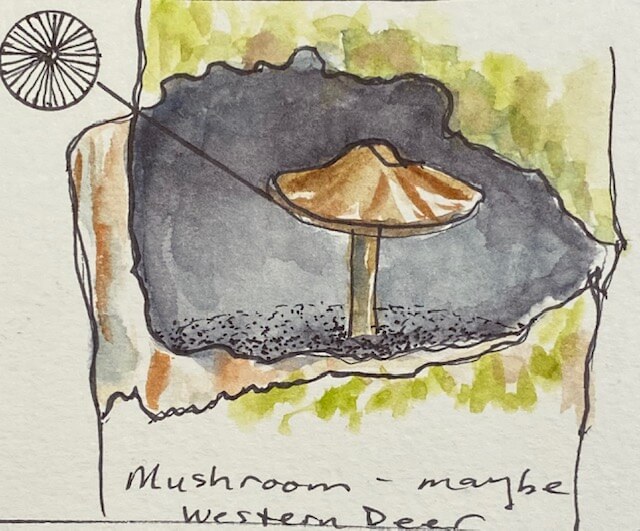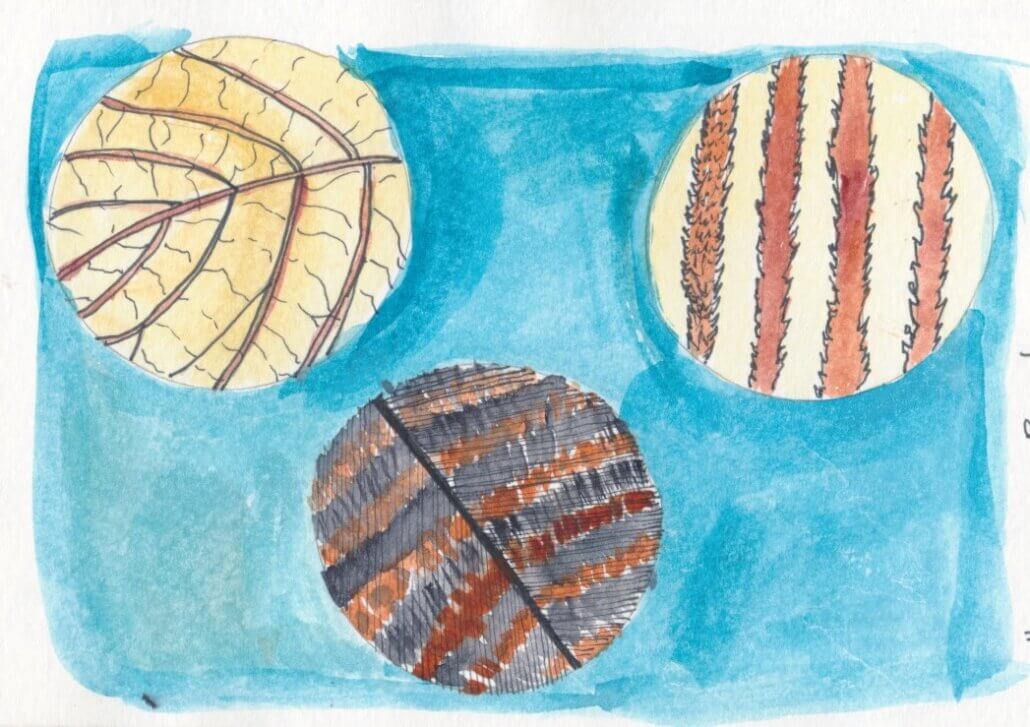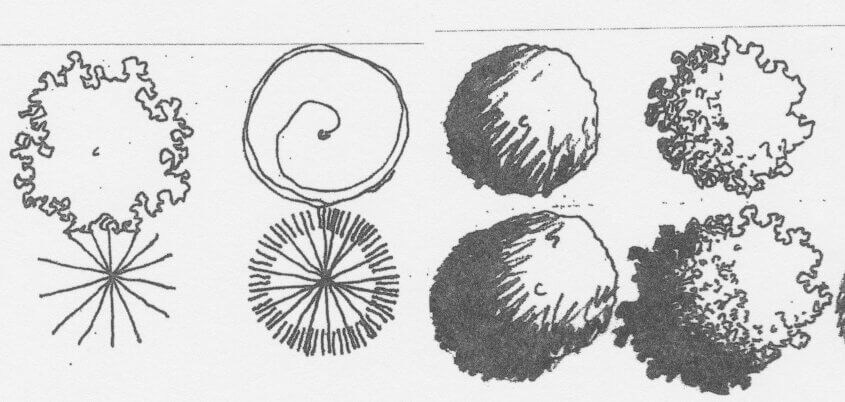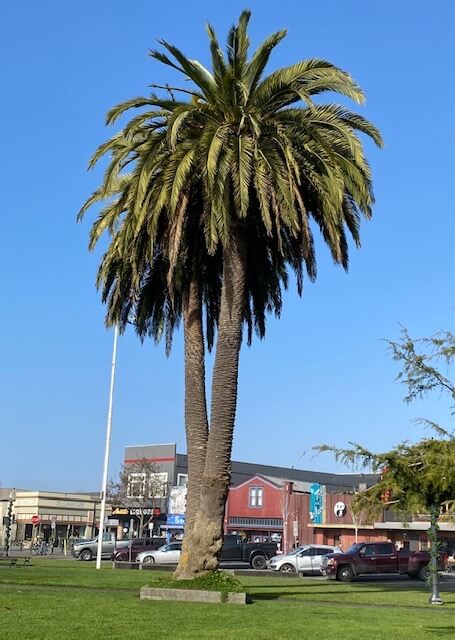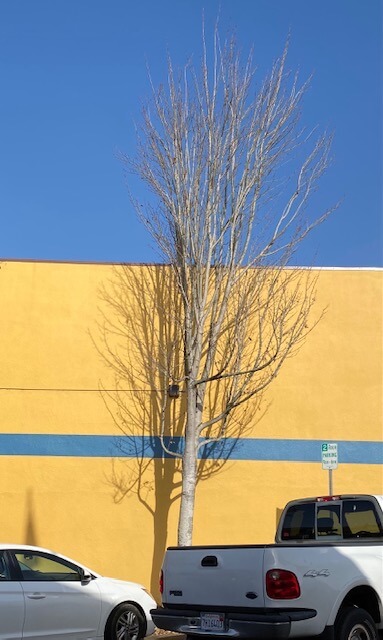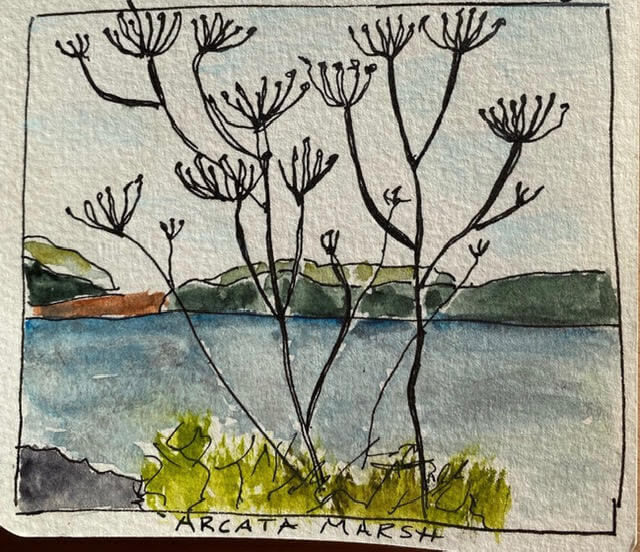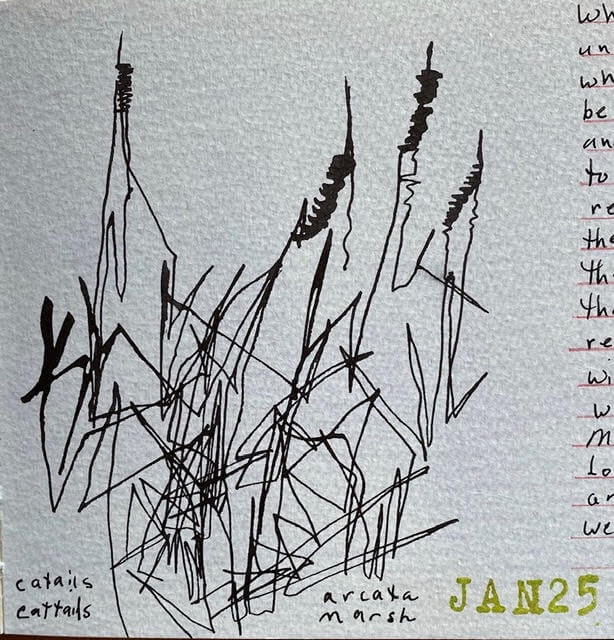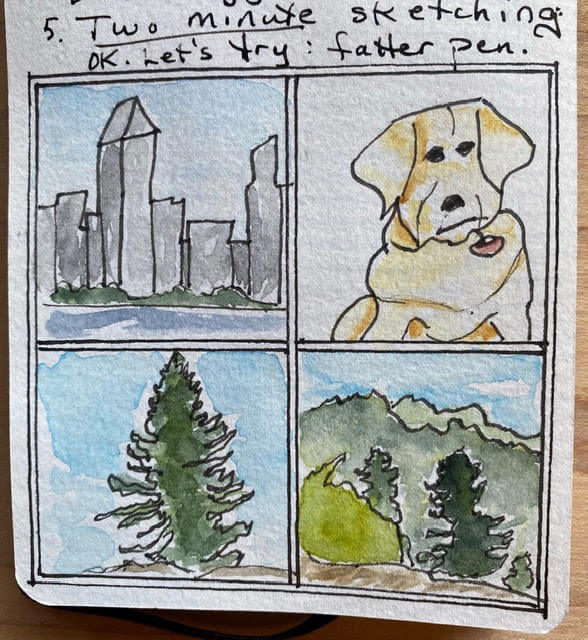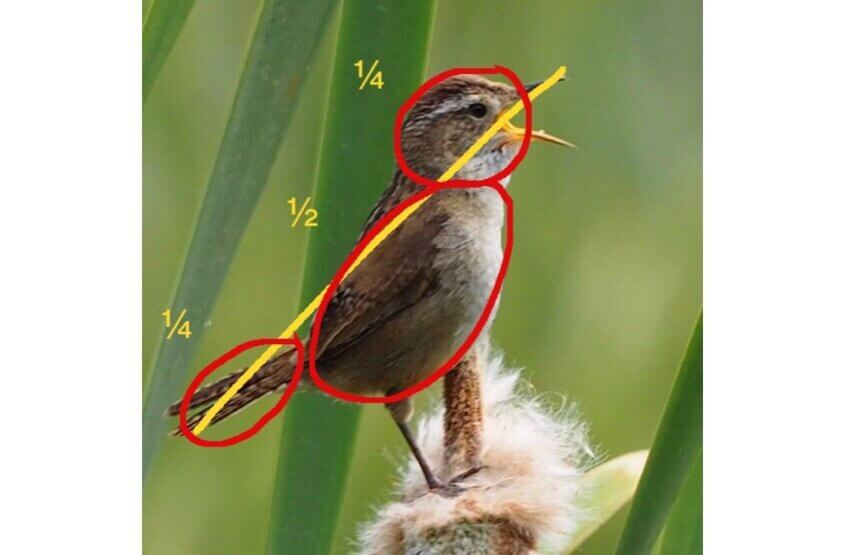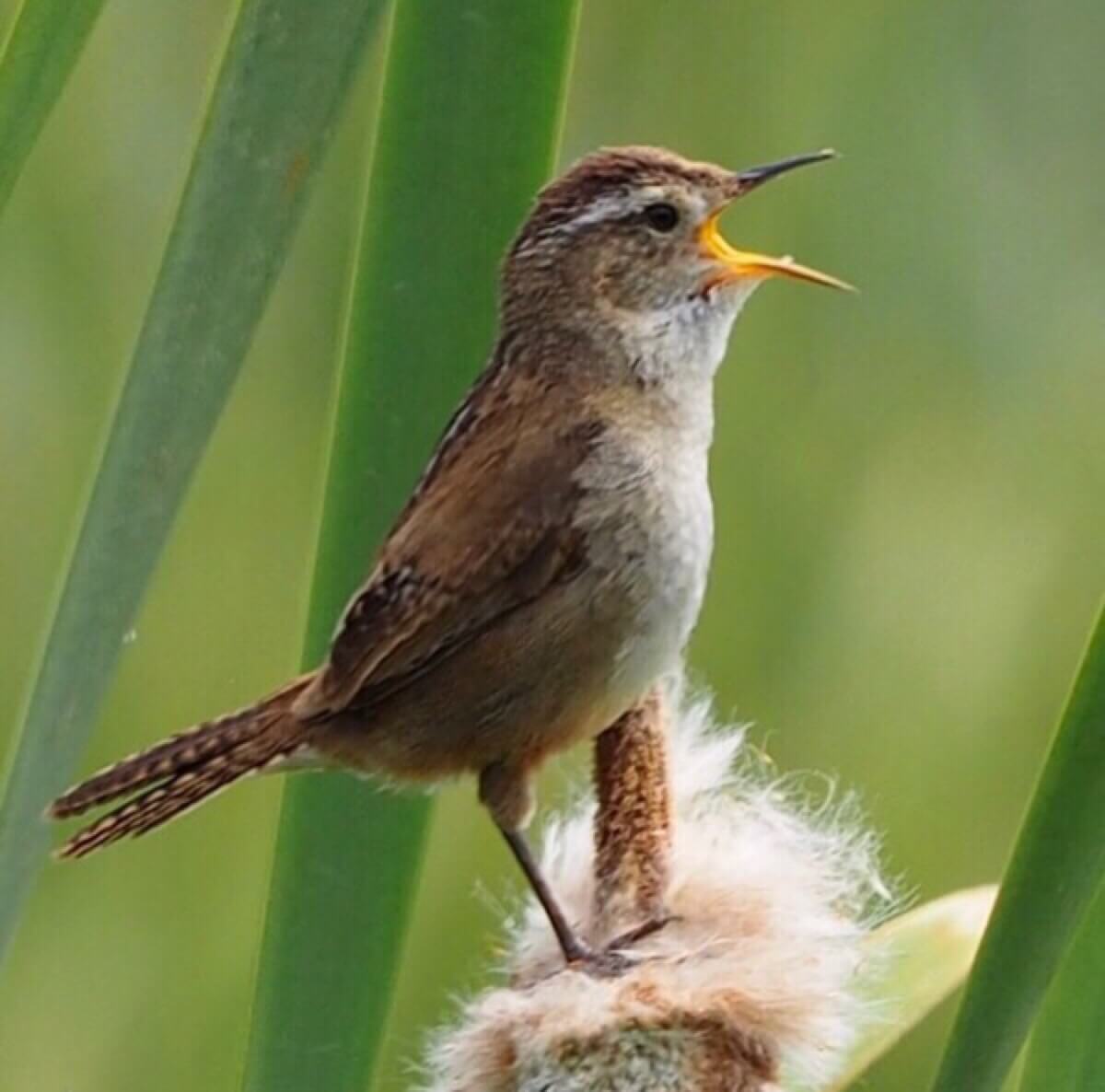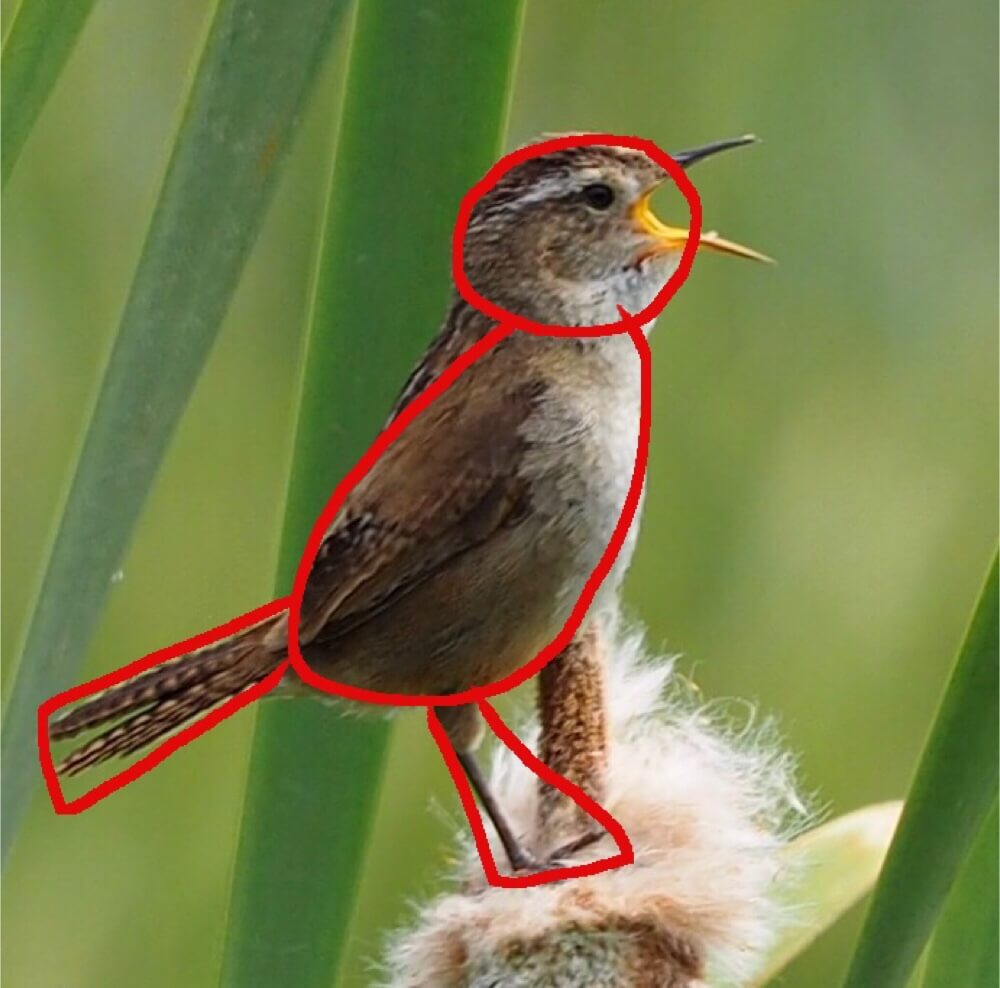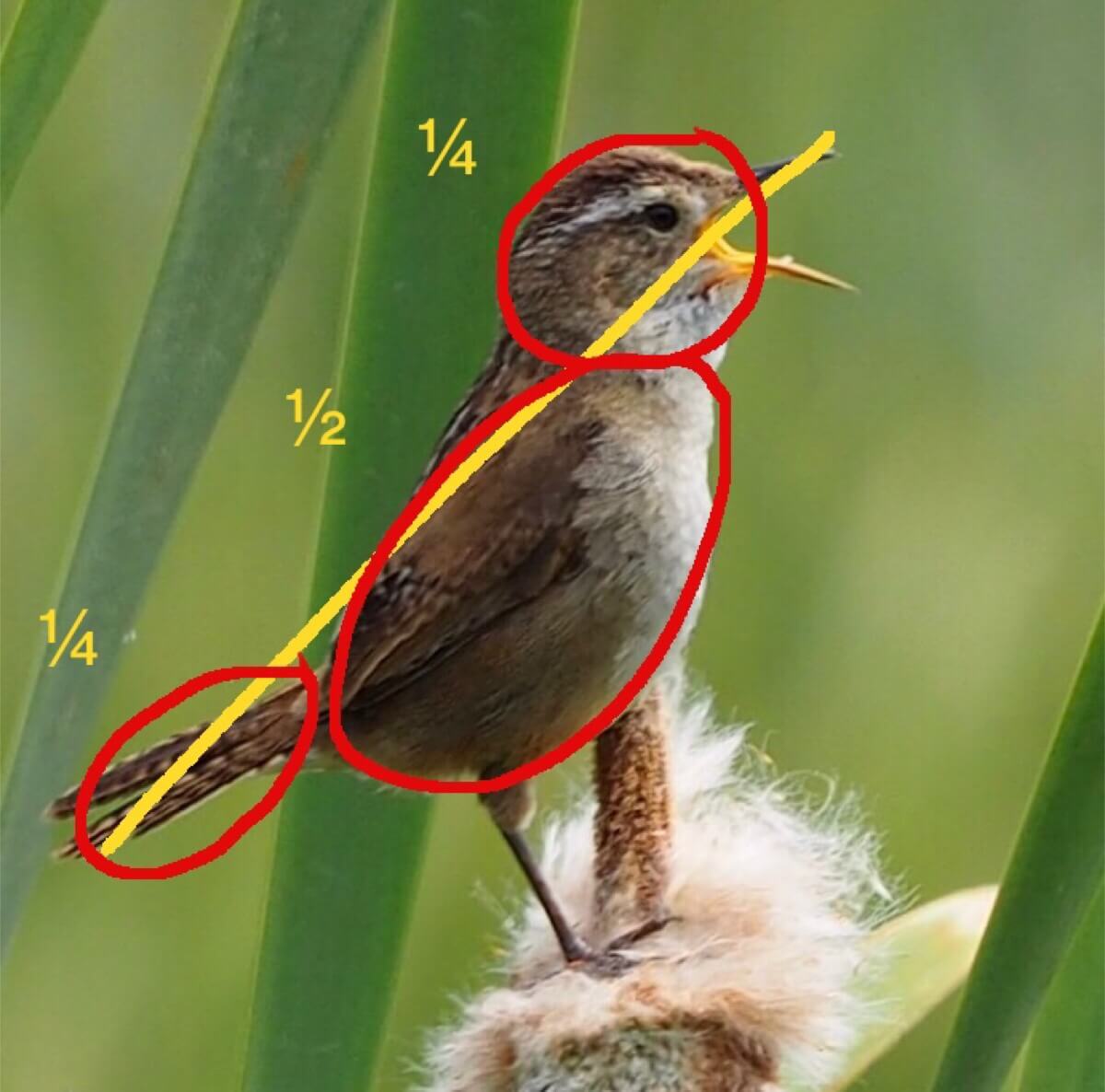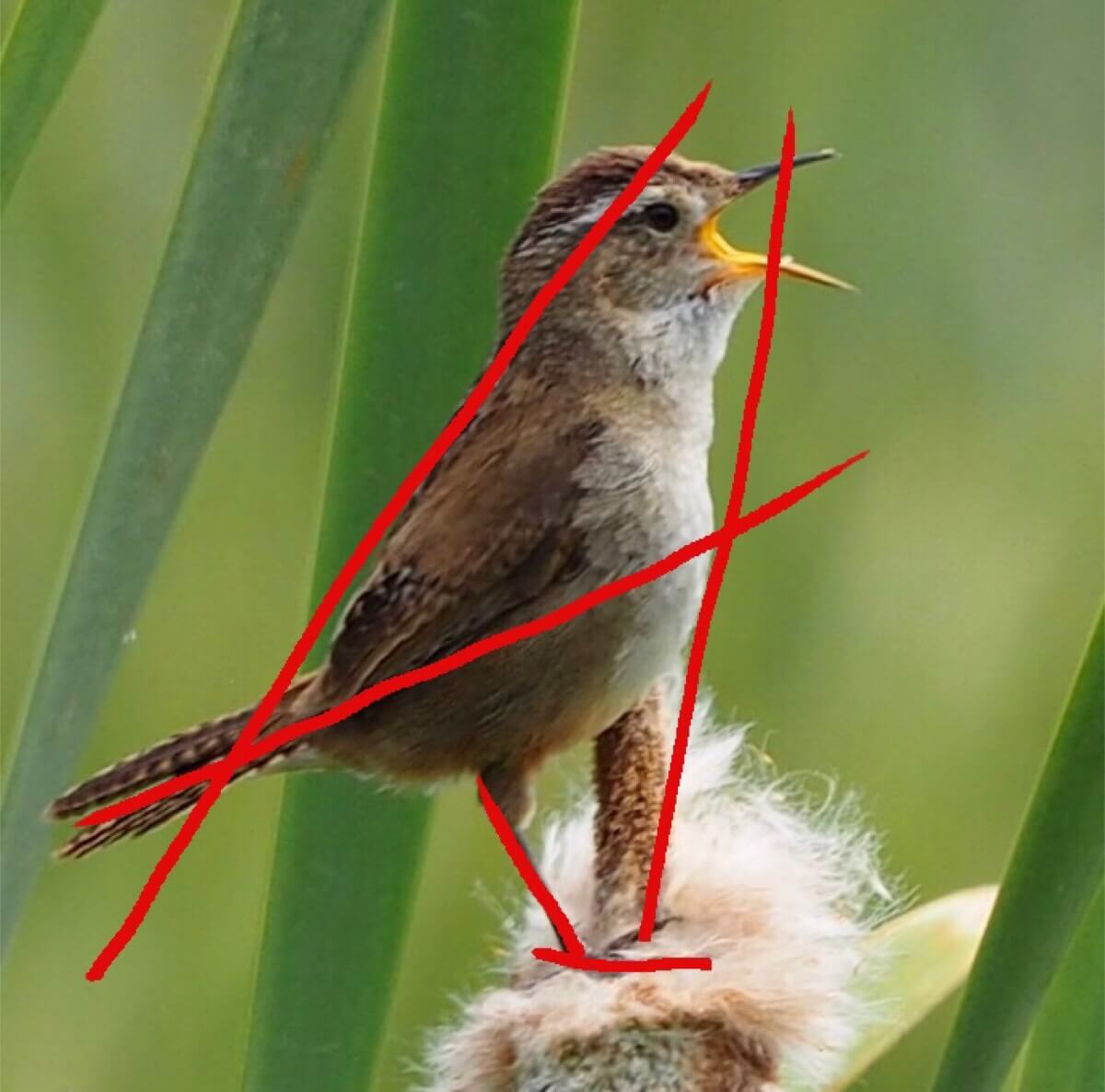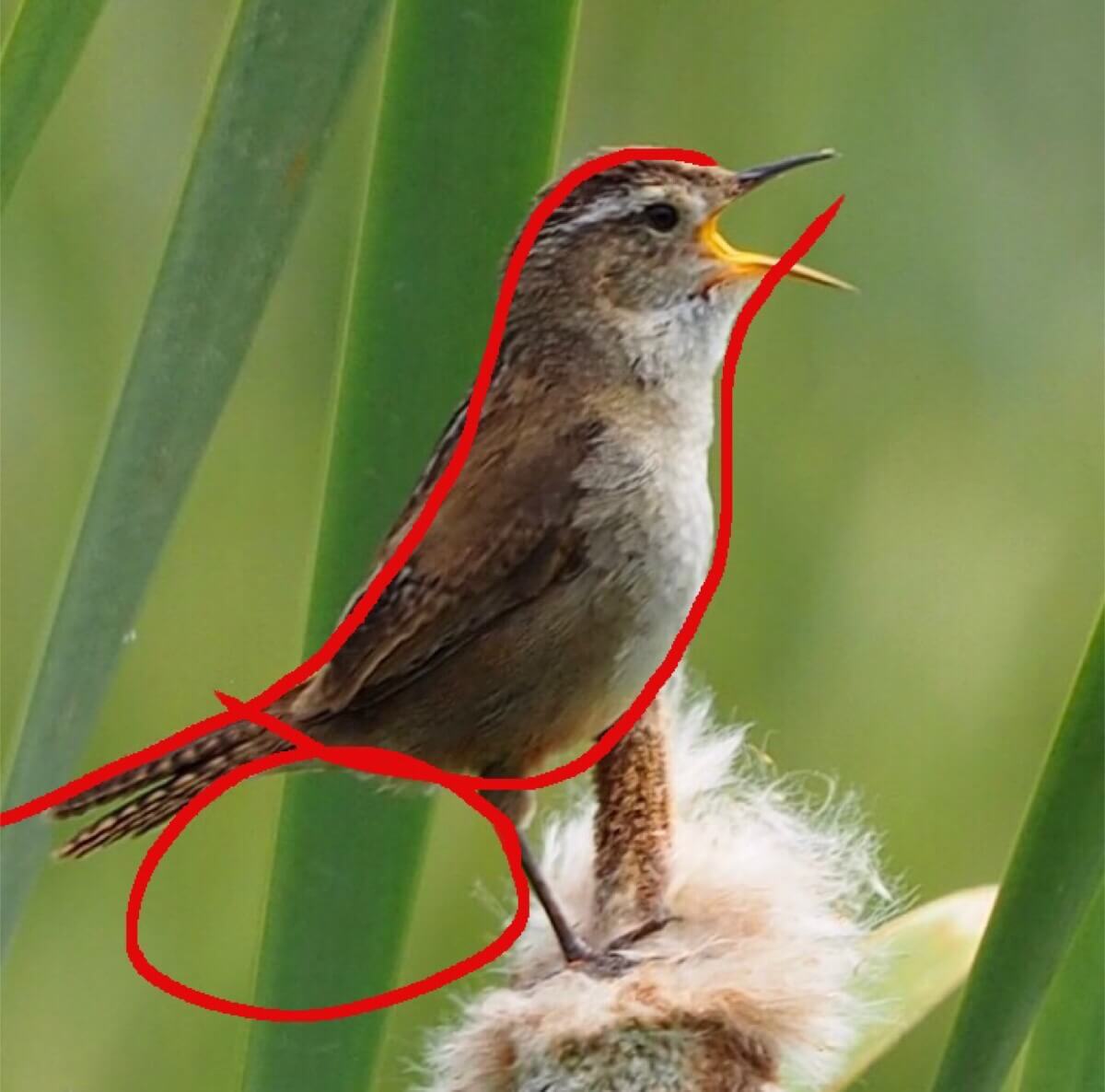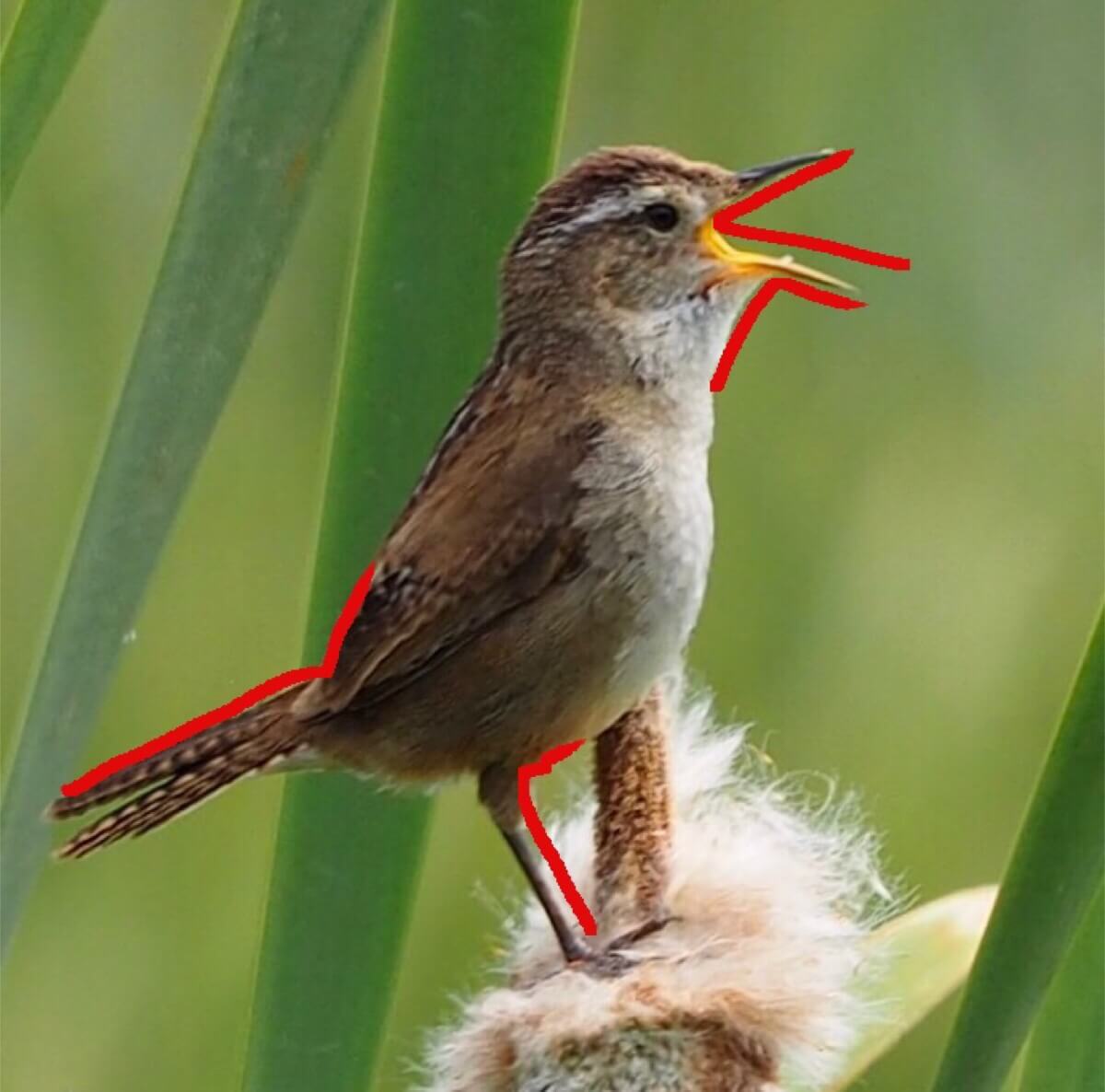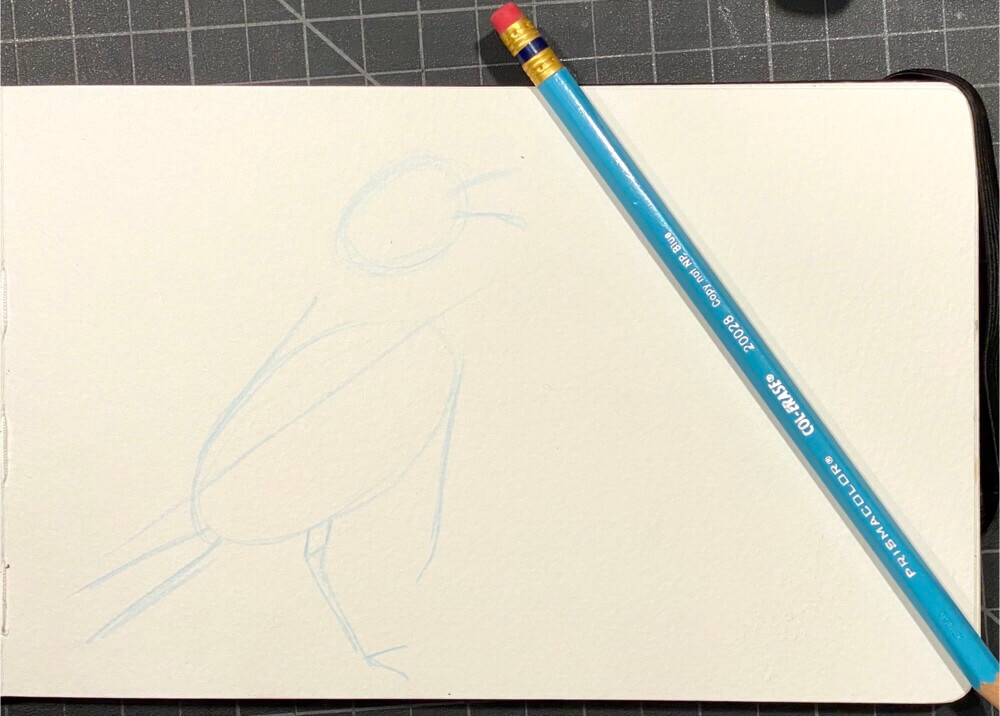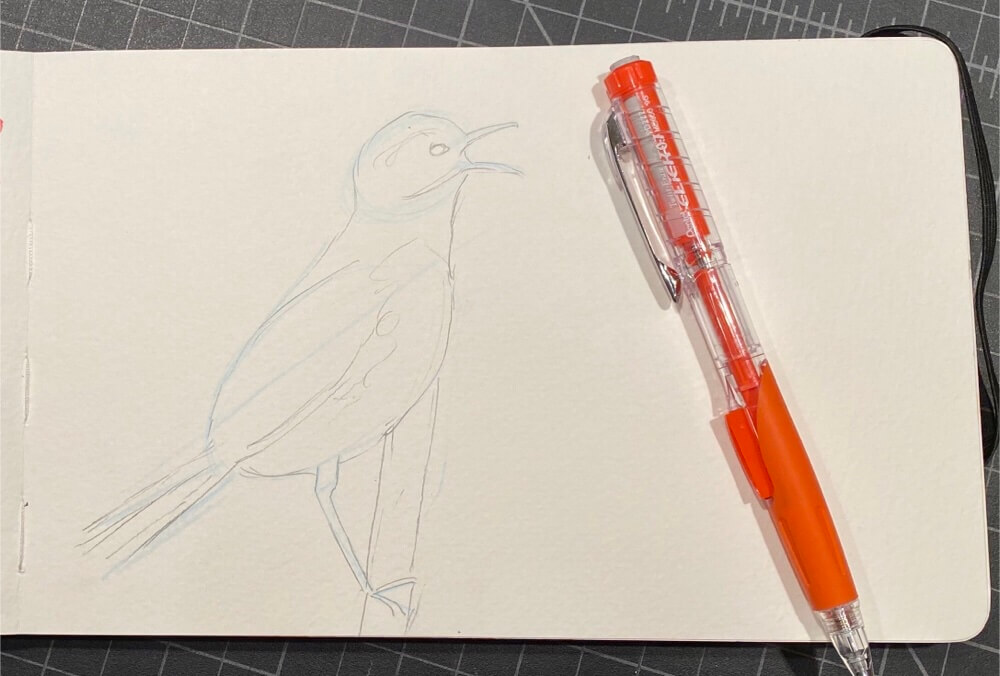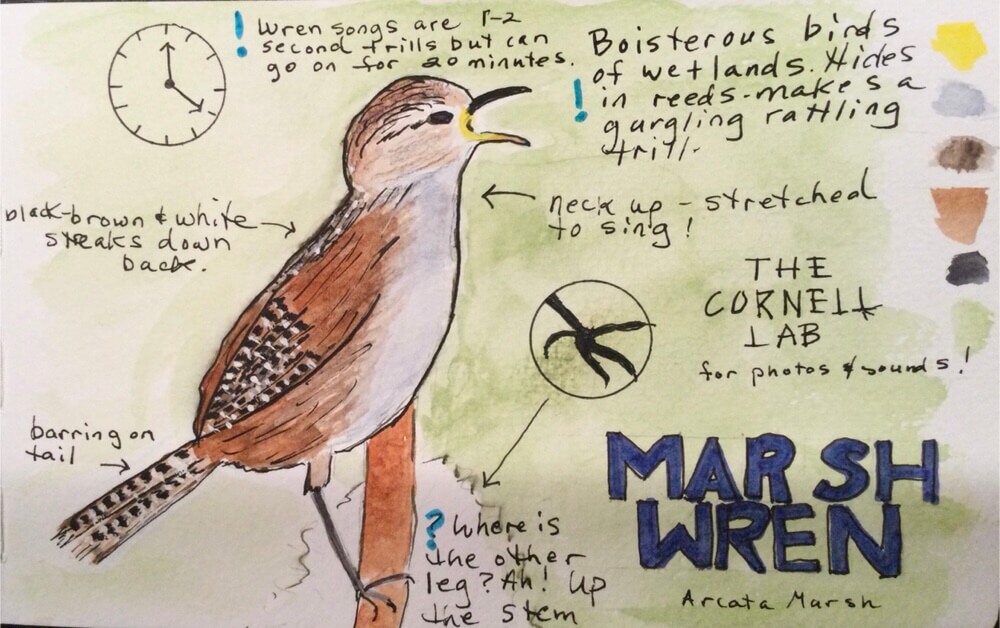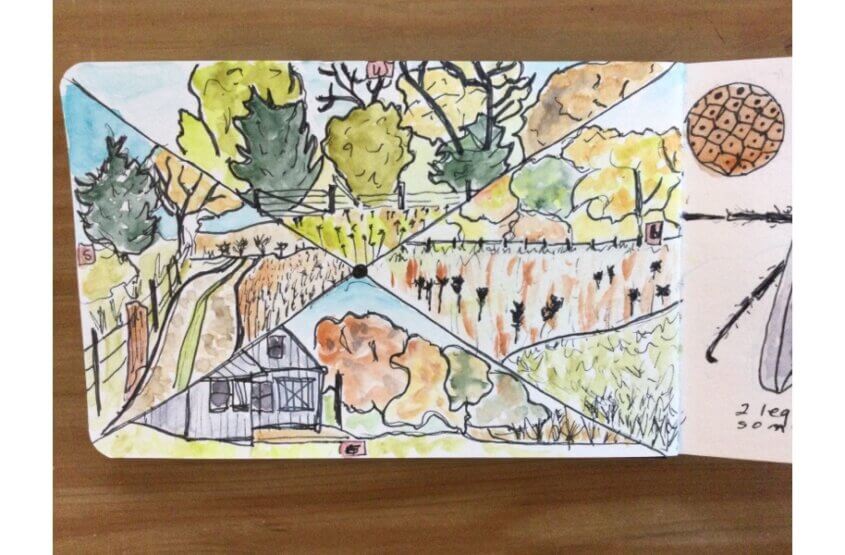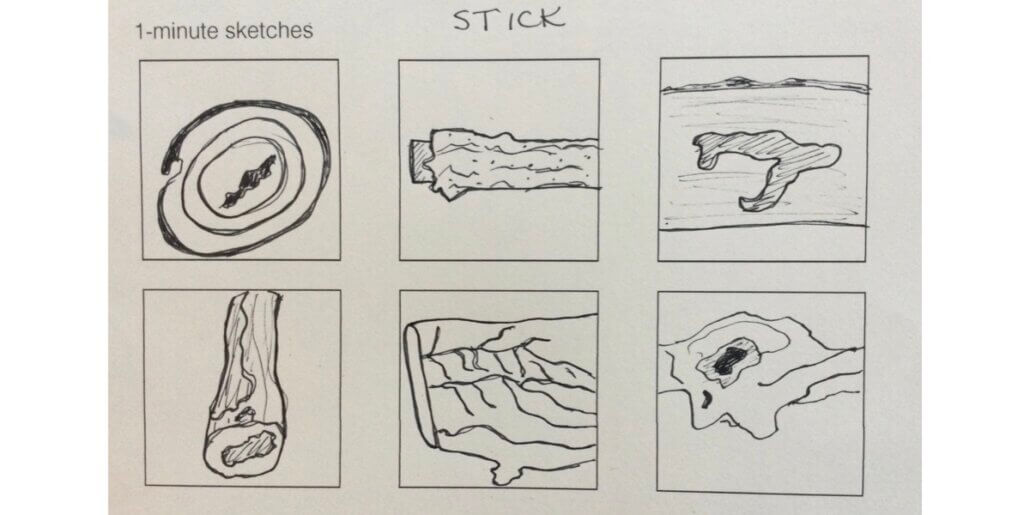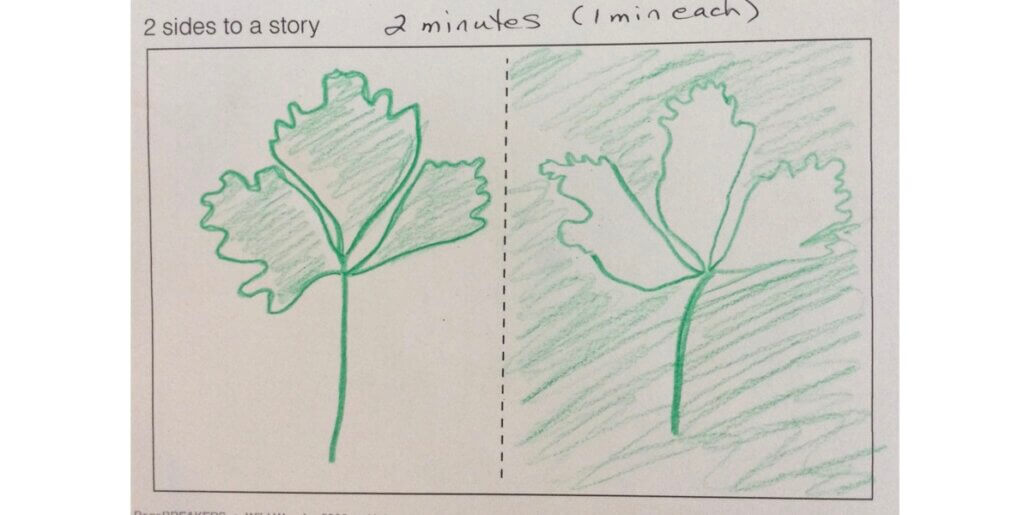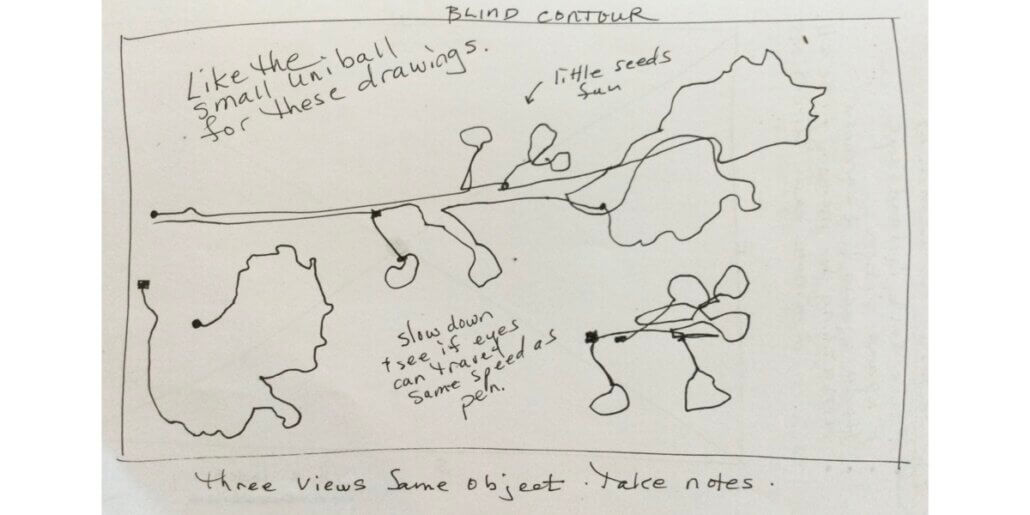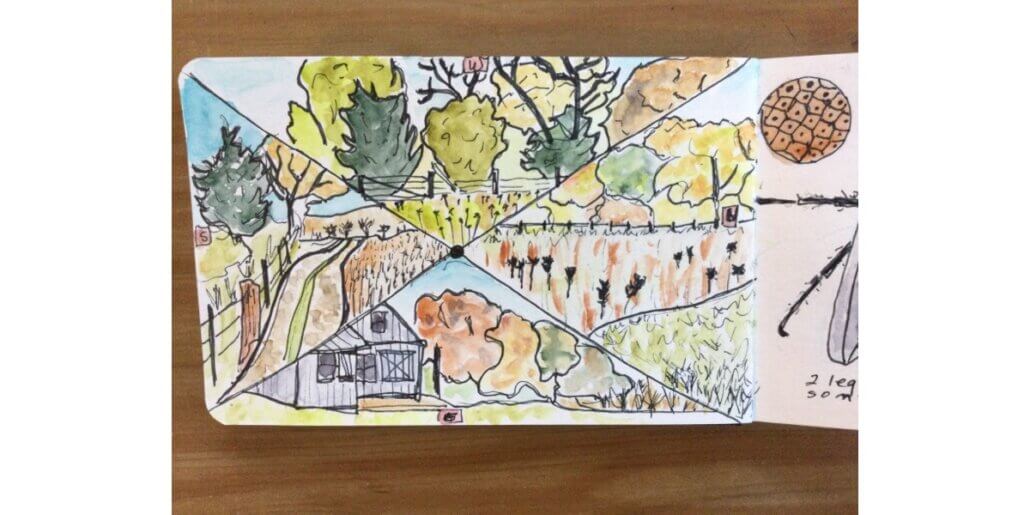Of course, nature journals require some handwriting. This is a place for calligraphers to jump in and dress up the page. However, there is much that can be done to make your page more interesting without a lot of fuss. I find that I print in my journals rather than using longhand; I like titles to be a different size, font, and color. John Muir Laws, an organizer of the Wide Wonder Journaling Conference 2020 uses bullets, titles in boxes, colored letters, and letters that feature artwork. This long video on his website features Bev Brady teaching lettering. She is a graphic artist for Trader Joe’s (and I do love their store signs). Her workshop at WWNJC included block lettering which I really enjoyed.
I like to print using architect’s handwriting as described by the urban sketcher and instructor Liz Steel.
I also like Tombow Dual Brush pens. The ink is water soluble but you an use that to your advantage. This Tombow Lettering Practice pdf is great.
A really easy way to add color and different “fonts” to your page is to use a fountain pen called a Pilot Parallel Pen. It’s actually a calligraphy type of pen but since is it a fountain pen, I can add colored inks. I love the inks carried by Just My Type Letterpress in Eureka and they carry the pens. I like the 1.5mm pen.
Mistakes. I make them. This is the first page of a new journal class from Liz Steel. When I wrote the word “DESIGN” I wrote “DESIN_” and realized I was concentrating on the style of the lettering instead of spelling! So. What to do? I used collage! It’s one of the best techniques for covering an error. I grabbed some red (to match berries) paper and wrote “G” and glued it down. The page didn’t look balanced so I made another red square for “K” even thought that was not a mistake. I actually think the page looks better with my “mistake”. I believe the plant is a cotoneaster. I drew a black and white image of the vein structure to fill the page with more science!
Here’s to happy mistakes!



